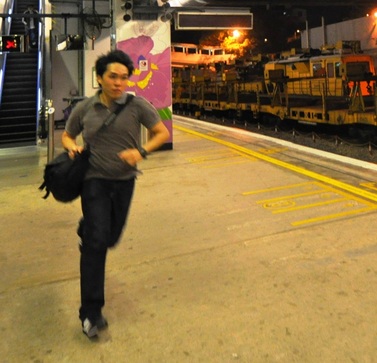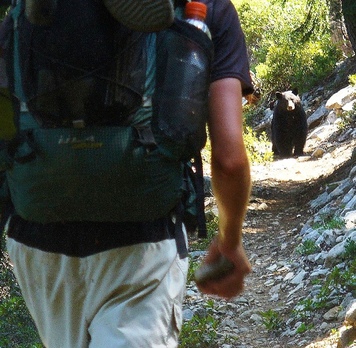(First Responders, Emergency Medical Staff, and Suicide Counselors Exempted) Avoiding vicious dog = true survival situation Avoiding vicious dog = true survival situation Early in my career, my job tasks overwhelmed me on a daily basis, until a colleague’s remark changed my perceptions about work: “No one is going to die if you stop working for an hour to eat lunch with us.” Too many people operate in survival mode, with elevated respiration and heart rates, cortisol and adrenaline pumping, and central nervous systems on high alert. In prehistoric times, living in such a state would be adaptive if it helped you avoid being eaten by a lion, but today, living in constant survival mode is unnecessary, drains energy, compromises physical and mental health, and limits performance. It is simply not sustainable over time. A survival response (also known as a limbic or involuntary nervous system response) can still come in handy, like the time a 120-pound German shepherd, emboldened by its clueless handler, lunged at me with intent to inflict great bodily harm. With no voluntary thought or planning, my nervous system took over, aided by a flood of hormones, to command my musculoskeletal system to achieve one split-second goal: get me out of chomping range! It worked, and I escaped the jaws of death, but it took ten minutes for my respiration to return to normal, and to regain my muscle strength (translation: legs no longer shaking). And I'm a dog person! For some, the physical recovery from such an event could take much longer.  If you're always late, treating tardiness like survival can deplete your health If you're always late, treating tardiness like survival can deplete your health Late ≠ "survival situation" To avoid a dog bite, my survival response was worth the physical toll. However, imagine how often people trick their bodies into responding this way—suffering the same costs—for situations that are not truly tied to survival. Many describe experiencing similar physiological reactions when they are running late for work, sitting down with their supervisor for a performance evaluation, reading an email, anticipating an unpleasant conversation with a colleague, and believe it or not, planning a vacation. In their minds, they are dodging vicious dogs all day long, suffering stress and losing quality of life. Could any of these situations actually jeopardize a person’s survival, or lead to someone suffering physical harm? If you catch yourself in the midst of a survival response, the first step to recovery is asking yourself precisely that question: “Under the current circumstances, is someone likely to suffer serious harm, or is my long-term survival somehow at risk?” Answering honestly, the conclusion will almost always be no. You may begrudgingly admit that the situation is not truly life or death, but then argue the following: 1. Others will feel angry, disappointed, or hurt (possible, but you could manage it) 2. Your organization will lose money, future business, or reputation (less likely, still survivable) 3. This will ultimately affect your job status, value as a person, and physical survival (come on now!) Even if that course of events were possible, it would still not require a limbic survival response anywhere near the level of vicious dog avoidance. I needed every ounce of my being to juke that shepherd, but when I’m late for work, I only need a fraction of that energy and focus (or the Waze app) to shave a few minutes off my commute. If I did go on high alert while running late, my heightened state would not help me reach the office sooner, unless I lived in a rural part of Montana or Germany without traffic or speed limits. Hurt feelings, productivity, reputation, and even job status are simply not in the same class as survival-based events, and people gain no advantage from trying to make their job—and anything that happens in it—a matter of survival. They also pay a high price for this mindset. Asking “Is anyone going to die?” or “What’s the worst that can happen?” can help bring matters into perspective.  A touch of stress hormone might come in handy here A touch of stress hormone might come in handy here Take it down a notch If those rhetorical questions don’t help calm the survival response, focusing on the moment might. Try letting the eyes wander, taking in your surroundings with all five senses, and describing objects in the immediate environment (e.g. bright computer monitor, humming air vent, curious person walking past my door). Next, ask yourself, “What’s going on right here, right now?” All of these can help you be more present and make an accurate appraisal of your safety needs. Finally, since a survival response typically involves elevated respiration, a deliberately relaxed breathing pattern—inhaling four seconds, exhaling four seconds, repeating for a long as necessary—can disrupt the response before it gains too much momentum and saps your energy.
0 Comments
Leave a Reply. |
The Solutions Mine BlogAll articles written by Jason Sackett, PCC, LCSW, CEAP. Archives
July 2021
Categories |
Services |
Call310.251.2885
|


